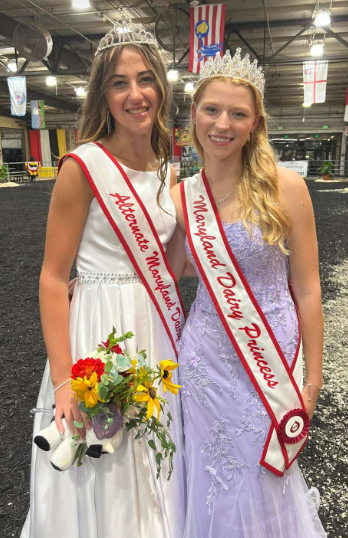On Tuesday, September 26, a few of science teacher Mr. Brady Green’s zoology classes took a trip to Harford Glen in Bel Air to observe the process of bird banding and bird watching.
Harford Glen, founded in 1948, has approximately 340 acres, according to birdersguidemddc.org. When students arrived on the campus, they were divided into two groups. One group was placed with a staff member who provided them with binoculars and had the group go on a nature walk to observe and count all the birds they saw. The first group had seen over 50 Canadian geese. Junior Madison Spangler said they observed “cardinals, blue jays, turkey vultures, belted kingfishers, and multiple other species.”
The group was also shown the Merlin Bird ID app. Apple.com states if, “you’re curious about a bird you’ve seen once or you’re hoping to identify every bird you can find, the answers are waiting for you with this free app from the renowned Cornell Lab of Ornithology. Expert ID tips, range maps, photos, and sounds help you learn about the birds you spot.”
After some time, the groups switched; the other things they had groups do while there was watch bird banding. The groups were placed with a different staff member, where they labeled a diagram of bird’s wings and then watched junior Frank De Lucia band birds.
De Lucia explained that bird banding is quite a straightforward process. “The first step is to capture the bird in a mist net, which is invisible to them, but nonetheless effective in capturing them.” He continues by explaining how the birds are then placed in breathable paper bags. “After this, they are brought to the banding station where we take each bird out of the bag and place a band with a unique code on it that identifies the individual. Once we band the bird, we affirm the species identification and then take various measurements, including the bird’s wing length, tail length, weight, age, and sex. The bird is then released and returns to the wild completely unscathed,” explained De Lucia. While watching the bird banding, Spangler learned that “you have to hold birds by their neck with your two fingers. It [kind of] looks like you’re strangling them, but they aren’t hurt at all.”
Spangler said they preferred watching the bird banding, “as I enjoy collecting data and interacting with species, which is something bird banding brings to the table.” Spangler said their favorite part was,“seeing how to band birds and how they are caught. It was a lot of fun. I might try to volunteer in the future.”
De Lucia said that bird banding is a “really great experience,” as “it is a really unique thing to get to do and most people interested in banding don’t get to bird band until college, but I have the opportunity right here in high school, which is really cool.” The junior explains how this opportunity gives him the ability to do lots of research. Along with bird banding, he is currently working on a project with the help of Mrs. Amanda Subolefsky, an educator and certified Master Bird Bander at Harford Glen. De Lucia says his project is focused on figuring out what is causing the decline in bird populations over the past few decades. He explains how he “download[s] datasets with bird banding data from across the country dating back to 1960. Obviously, these datasets are extremely large, so rather than manually compiling the data, I write a Python code that simplifies the dataset, allowing me to graph the bird populations over time.”
Bird banding is a process that happens at Harford Glen every Tuesday and Thursday, Sept. through Dec., and again through March through June. According to alltrail.com, “From November 1 to March 30 annually the center is only open for school usage and from April to October it is only open publically on weekends except for from June to August when it is open seven days a week.”
















